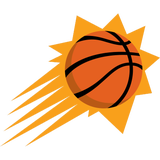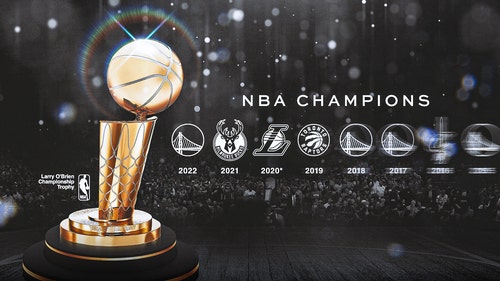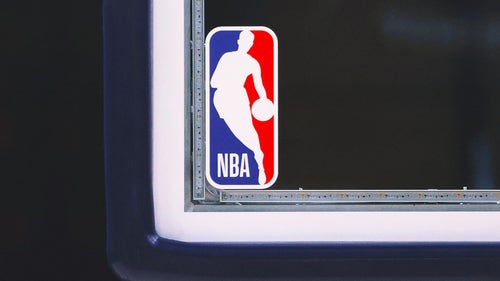
2017 NBA Draft superlatives: Biggest sleeper, safest pick and more
Maybe the most difficult part of assessing NBA Draft prospects is determining which of their skills will translate to the pros. Relying on statistics alone is a flawed approach, and the eye test can be deceiving. Sure, that point guard from State U made 40 percent of his threes during his senior season, but will he be able to shoot over longer defenders? And yes, that lanky French big man swatted everything in sight as a Euro standout, but can he provide the same level of rim protection against craftier scorers? There are no simple answers.
That makes today's draft-related endeavor a daunting one: identifying which players are the best in a set of important categories. Some of these categories have clearer answers than others, and most of them involve a fair bit of guesswork. What unites them is an outsized influence in the evaluation process. In seeking to address different aspects of their rosters, front offices must be able to distinguish the discrete qualities prospects bring to the table. The Crossover is taking up that same goal in presenting its 2017 draft superlatives.

Best shooter: Malik Monk, SG, Fr., Kentucky
Monk's path to becoming a high-level starter is plain. He's such a lethal shooter that his coach won't be able to keep him on the bench for long. Monk's 47-point effort against eventual national champion North Carolina last December was one of the most absurd scoring outbursts any freshman has delivered in recent memory. He's a threat to let fly in transition or against a set defense, off screens and on catch-and-shoots, from the corners or above the break. He's also demonstrated a capacity to consistently connect on an increasingly important shot in today's NBA: the pull-up jumper. According to data from Synergy Sports Technology, Monk averaged 1.01 points on off-the-dribble Js in the halfcourt last season, better than every other likely first-rounder from the college ranks save Duke's Luke Kennard and Washington's Markelle Fultz (minimum 50 possessions). Kennard, for what it's worth, was a serious contender for this category, but the strong likelihood that Monk will have an easier time getting his shot off against pro defenders than Kennard will put him over the top. In all, Monk drained 39.7 percent of his 262 long-range attempts and 82.2 percent of his free throws last season.
Best scorer: Jayson Tatum, SF, Fr., Duke
The biggest takeaway from watching Tatum is that he just looks like a professional scorer. His game is defined by a varied suite of body feints, jab steps, pace-changing dribbles and pump fakes, all of them deployed with the goal of manufacturing just enough space to release a clean shot. One of the joys of following an otherwise maddening Blue Devils team over the course of last season was watching Tatum go to work in an isolation set against some hopelessly overmatched ACC upperclassman. The end result of these exchanges often involved Tatum providing a candidate for the night's "SportsCenter" Top 10, and the defender shaking his head in frustration while his teammate took the ball out under the hoop. Tatum wasn't super-efficient as one of the Blue Devils' primary options last season, but he showcased an advanced offensive arsenal inside the three-point line, and shot well enough from behind it (34.2%) and the free-throw stripe (84.9%) to suggest he'll be able to connect at a decent rate from beyond the NBA arc. Moreyball acolytes may blanch at Tatum's rep as a mid-range master, but he shouldn't be confused for a ball-stopping chucker.
Best defender: OG Anunoby, F, So., Indiana

This selection is more about what Anunoby could become than what he's already proven he can do. The trouble with scouting Anunoby is that he just didn't play all that much in college. After logging an average of only 13.7 minutes over 34 games as a freshman in 2015-16, his sophomore campaign was cut short after 16 games because of a knee injury. But in that limited sample, we saw some hints of what the best version of Anunoby might look like: a rangy, physical stopper who can guard pretty much every position on the floor, contest shots both at the basket and away from it and restrict passing windows. His switchability would be a huge asset deep in the playoffs; the first step to beating the Warriors is gumming up the ballet of ball screens and cuts that powers their all-world offense. Anunoby isn't just a spectacular run-and-jump athlete. He's freakishly long, with a 6-foot-8, 215-pound frame and a 7-2 wingspan. Teams considering drafting Anunoby will need to be comfortable that he'll fully rehabilitate the knee injury. If he can, it's difficult to envision any other prospect in this class making a bigger defensive impact. Let's cool it on the Kawhi Leonard comparisons, though.
Biggest risk: Harry Giles, C, Fr., Duke
It wasn't that long ago that Giles was viewed as arguably the best prospect on the planet in his age group and an early candidate to be taken No. 1 overall in 2017. That sentiment gained currency after Giles underwent surgery to address his first major injury — a torn ACL, meniscus and MCL in his left knee, from which he recovered to shine on the AAU circuit and solidify his status as a can't-miss recruit. But he's since undergone two more knee procedures, one to address a torn ACL in his right knee that forced him to sit out his senior high school season, and the other a scope on his left knee that sidelined him for 11 games of his freshman campaign with the Blue Devils. When he returned to action last year, Giles wasn't the old Giles. He played only 11.5 minutes per game and registered 15 minutes total in the Blue Devils' two NCAA tournament contests. Though there were some flashes of the Chris Webber-like package that made him such a coveted prep prospect, Giles never looked totally comfortable. That's understandable, but front offices will need to ask themselves whether last season was a transitional period for Giles to get his bearings after so much time out of commission, or a preview of how he'll perform at the next level.
Safest pick: Donovan Mitchell, G, So., Louisville
Here's what we don't know about Mitchell: if he can play point guard all the time in the NBA. What we do know, though, outweighs the uncertainty surrounding his position. Mitchell is a combustible athlete who can blow by defenders off the dribble, get to the rim in the blink of an eye and finish with authority once there. He moves well laterally, his sturdy frame (6-3, 211 pounds) and length (6-10 wingspan) will enable him to cover opposing guards and wings, and he's a pest for opposing ball handlers. (Mitchell led the ACC with a 3.6 steal percentage during conference play last season, according to Kenpom.com.) Mitchell also proved as a sophomore with the Cardinals, after putting up sub-par numbers in this area as a freshman, that he can be a quality, if inconsistent, three-point shooter. He buried 40 percent of his 130 treys against conference competition and also hit 82.5 percent of his free throws. Put all of these traits together, and what you get is a rotation mainstay who can score from both sides of the arc, function as a secondary playmaker and defend multiple positions. If he eventually hones the distribution skills needed to play the point full-time, all the better. But Mitchell will play up to his draft slot even if he doesn't.
Best shot-blocker: Zach Collins, C, Fr., Gonzaga
The stretch of play that coincided with Collins' rapid ascent up draft boards illustrated both why he could be so effective in this category and why he has a long way to go before he actually is. In Gonzaga's win over South Carolina in this year's Final Four, Collins blocked six shots in only 23 minutes. Two nights later, in the Zags' national championship game matchup against North Carolina, he fouled out despite playing only 14 minutes. There's a chance Collins grows into the type of backline eraser every NBA team wants to buoy its defense. He does well anticipating opponents' shots around the rim and rises off the floor quickly to contest, which helps compensate for his average length (7-foot with a 7-1 wingspan). In Collins' lone season with Gonzaga, he swatted 9.8 percent of two-point field goal attempts while on the court, the highest percentage of any college player included in The Crossover's latest Big Board. The next step? Proving he can actually, you know, stay on the court. Only two players in this class (Giles and UCLA's Ike Anigbogu) committed more fouls on a 40-minute basis than Collins last season. He can prepare himself for the low-post jostling he'll need to do against heftier NBA bigs by adding some mass to a skinny, 232-pound frame.
Best rebounder: Caleb Swanigan, C, So., Purdue
Swanigan may not hear his name called until the second round Thursday, but plucking him with a late first-round pick might not be a bad idea. He is, to put it simply, a board-hoarding machine. Swanigan does a good job clearing space in the paint, using his refrigerator-physique (6-9, 247 pounds) to box out defenders and leap to snatch misses, and he has a refined sense for determining the ball's path after it clanks off the rim. At Purdue, players typically couldn't move Swanigan once he got set on the low block, and he'd often outmuscle them for caroms even when they did. Last season, he ranked third in Division I by grabbing 32.7 percent of opponents' misses while he was on the floor, and his 15.3 rebounds per 40 minutes were more than any college prospect slated to be selected in this draft. True, Swanigan won't be able to toss around NBA big men like he did Big Ten centers, but his rebounding prowess should endure against brawnier opponents. The case of a 2015 draft prospect, UC Santa Barbara's Alan Williams, is instructive. He also blended a thick-but-short physical profile with eye-popping rebounding statistics, only against weaker competition in the Big West conference. Over two seasons with the Phoenix Suns, Williams has established himself as one of the Western Conference's more productive glass-cleaners. A similar path for Swanigan is feasible.
Best playmaker: Lonzo Ball, PG, Fr., UCLA
Ball spent his one-year stopover in college conducting one of the most entertaining offenses since the turn of the century, a pace-pushing, point-spewing locomotive that flattened most opponents before they had time to check the scoreboard. Ball's creativity elevated the Bruins' halfcourt attack to a higher plane, and he imposed order on their breakneck rushes to the hoop, rifling lasers in transition to teammates racing down the court. Ball's assist numbers (7.6 pg) attest to his playmaking ability, but perhaps a better way to understand the degree to which his passing fueled UCLA's offense last season is by measuring his effect on the players who sported those iconic powder-blue-and-gold uniforms with him. As Sports Illustrated's Luke Winn wrote in May, “Ball's five teammates with the most playing time had usage-adjusted offensive efficiency ratings of, on average, 6.8 points per 100 possessions better” than projected by SI in the preseason, a difference that far exceeded those recorded by the teammates of the three other top point guard prospects in this class (Washington's Markelle Fultz, N.C. State's Dennis Smith and Kentucky's De'Aaron Fox). In sum, Ball is a sublime passer with preternatural court vision who makes everyone around him better.
Biggest sleeper: Jawun Evans, PG, So., Oklahoma State

There's a distinct possibility that half of the first eight picks in this draft will be used on point guards (Fultz, Ball, Fox and Smith). Those point guards have generated an ocean of hype, drowning out other players at the position tracking toward the end of the first and second round. So it makes sense if this is your first time hearing about Evans, but it definitely won't be the last. The biggest knock on Evans is his height, which could hurt him defensively. He measured 5-11 1/2 in shoes at the combine, the shortest of any player at the event. Yet Evans makes up for that deficiency with his length (6-5 wingspan), he's strong for his size and a dogged ball-pressurer. Evans probably won't be a liability on D, but even if his team has to hide him from time to time, he can counterbalance that with what he contributes on the other end of the floor. Evans' facility as a pick-and-roll operator should smooth his integration into an NBA system, and last season he spearheaded the most efficient offense in the nation at Oklahoma State. The Cowboys' attack went in the tank, relatively speaking, when Evans took the bench. (It dropped from 1.22 points per possession to 1.06, according to Hoop Lens.) He may not have the ceiling of Fultz or Ball, but Evans could be a starter hiding in plain sight.
Biggest project: Terrance Ferguson, SG, Australia
Unlike most of the other players in this class, Ferguson already has played pro basketball, but that doesn't mean he's more prepared for the NBA than the collegians. For starters, Ferguson recorded an average of only 15.2 minutes over 30 games in the National Basketball League. And while Ferguson was battling grown men with plenty of experience, as opposed to the callow 18-to-21-year-olds in the Pac-12 he would have faced at Arizona, Ferguson's stint Down Under didn't change what, at bottom, makes him one of the biggest unknowns of this draft. Here's the crux of the Ferguson Conundrum: He is a 3-and-D prospect who neither shoots threes nor guards all that well. In the NBL last season, Ferguson connected on only 31.4 percent of his attempts from beyond the arc and only 59.7 percent of his free throws. Ferguson can catch fire, like he did in a memorable 7-for-11 showing at the 2016 Nike Hoop Summit, but it's an open question whether he can be a legit threat from behind the NBA line.
Most star potential: Markelle Fultz, PG, Fr., Washington
This is why Philadelphia pushed its chips to the center of the table. Fultz offers just about everything a team could want from a franchise point guard: pick-and-roll proficiency, the ability to generate shots off the bounce, playmaking savvy, deep shooting range, favorable physical tools. All of those things, and others that went unmentioned but also apply to Fultz, are important, but what separates him from every other player in this class is the upward bound of his trajectory — the prospect that he blossoms into an A-lister who's a fixture in the All-NBA conversation for a decade. Now, the gulf between that outcome and Fultz in the present, a prospect eager for his next step, is vast. He's coming off a season in which he won only nine games while leading one of the worst teams in the major conferences. Washington's futility should not be laid at Fultz's feet; the Huskies lacked top-end talent after losing guard Dejounte Murray and forward Marquese Chriss to the draft a year ago. But 76ers general manager Brian Colangelo will have to reckon with the fact that he's mortgaging his team's future to select a player who couldn't lift his college squad to respectability in a relatively weak conference, even if that had more to do with Fultz's teammates than Fultz.
Top prospect with the biggest flaw: De’Aaron Fox, PG, Fr., Kentucky
There's so much to like about Fox. He's got a tight handle, he moves like The Flash with the ball in his hands, he's a relentless defender, a willing basket-attacker and a shrewd distributor. All of which will be put to good use in the pros, but there's one thing that could preclude him from joining Fultz on All-Star ballots for years to come: Fox can't shoot. He averaged only 0.65 points on halfcourt jumpers at Kentucky last season, according to Synergy. Fox also attempted just 69 three-point shots and hit only 17 of them, good for 24.6 percent. Those numbers are alarming in an age in which bricklayers risk cramping their teams' offenses and constricting lineup flexibility. Opponents could ignore Fox on the perimeter to clog the paint, and Fox could see defenders go under ball screens on pick-and-roll actions, inviting him to rise and fire with the comfort that his shots probably won't fall. That said, Fox's J is not a lost cause. His form can be corrected, and he also sank 73.6 percent of his 211 free-throw attempts with the Wildcats. Plus, subpar college shooting doesn't always persist in the NBA. Among point guards, both Kemba Walker and Kyle Lowry have made huge strides since leaving school.
This article originally appeared on



